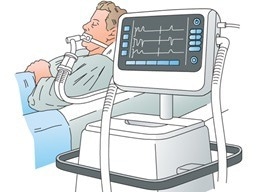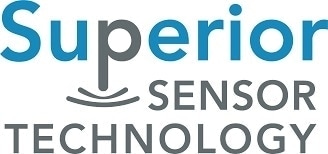Several medical studies estimate that a minimum of one-third of patients experience repeated dyssynchrony during mechanical ventilation. Dyssynchrony takes place when the mechanical ventilator is not in sync with a patient’s breathing needs.

Image Credit: Superior Sensor Technology
It is common for poor synchrony to occur in both invasive and noninvasive mechanical ventilation. It is a serious problem that may lead to increased patient discomfort, prolonged mechanical ventilation, long-term lung damage, expanded respiratory muscle work, and confusion during the weaning process.
Patient-ventilator dyssynchrony may arise in different forms, including auto-triggering, ineffective triggering, delayed triggering, double triggering, prolonged inspiratory effort, and asynchrony in cycling off the ventilator.
These problems may be caused by numerous factors, such as patient-ventilator asynchrony, inappropriate ventilator settings, sedation, high respiratory drive, and neuromuscular disorders.
Patient-ventilator dyssynchrony symptoms can involve increased respiratory rate, increased airway pressure, low or elevated tidal volume, paradoxical breathing, or breath stacking.
Dyssynchrony may cause further respiratory distress if it is not resolved quickly and in extreme cases, may cause pneumothorax, barotrauma, and other difficulties.
To reduce the risk of patient-ventilator dyssynchrony, it is critical to closely monitor the patient’s respiratory status closely and adapt the settings of the ventilator as required to optimize the respiratory support of the patient.
As part of this process, mechanical ventilators need to eradicate the effects of system noise and react rapidly to patient breathing demands.
The role of pressure sensors in combating dyssynchrony
Pressure sensors are critical components of ventilators; they monitor and manage the pressure and flow of air and oxygen to the patient. They may be utilized to decrease the risk of patient-ventilator dyssynchrony by enabling the ventilator to react to the patient’s respiratory efforts in an accurate and timely manner.
There are various ways in which pressure sensors can provide better patient-ventilator synchrony, including:
Trigger sensitivity
Pressure sensors may be utilized to modify the ventilator trigger sensitivity, i.e., the amount of pressure necessary to initiate a breath. The patient may need to work harder to initiate a breath if the trigger sensitivity is too high, resulting in dyssynchrony. Conversely, if the trigger sensitivity is too low, the ventilator may deliver breaths when the patient may not be initiating a breath, resulting in over-assistance. Pressure sensors can be utilized to verify that the trigger sensitivity is suitable for the respiratory effort of the patient.
Detect patient effort
Pressure sensors are capable of detecting the patient’s inspiratory effort and adjusting the ventilator settings as required. An example of this is if the patient is producing strong inspiratory efforts, then the ventilator can increase the tidal volume or pressure support to meet the patient’s requirements. If there is no inspiratory effort from the patient, the ventilator can lessen the support to prevent over-assistance.
Detect airway resistance
Pressure sensors are able to detect variations in airway resistance, which may be an indication of patient-ventilator dyssynchrony. If the pressure sensor detects a rise in airway resistance, the ventilator can alter the pressure support or flow rate to counteract the increased resistance and preserve synchrony.
In general, pressure sensors provide useful information about a patient’s respiratory status and enable the ventilator to react in a suitable and timely manner to minimize the risk of patient-ventilator dyssynchrony.
Superior Sensor Technology’s VN Series improves patient-ventilator synchrony
The VN Series pressure sensor family was created to assist a wider variety of patient breathing demands. Designed for the unique needs of high-flow oxygen devices and high-performance ventilators, the VN Series utilizes an advanced oversampling method to enhance the accuracy of the sensors and improve the response time.
The product family is comprised of seven new devices that can support a broad range of system applications, from measuring flow to inlet, expiratory, inspiratory, and barometric pressures. State-of-the-art digital processing substantially decreases the effect of system-level noise.
In addition, with advanced filtering, 24-bit output resolution, exceptional zero stability, and support for an update rate exceeding 1 kHz, the sensors have been designed to ensure maximum system accuracy and reduction of error rates. This significantly benefits patients in life-critical respiratory circumstances.
The table below displays the applications of the various sensors in the VN Series:

Devices with two checks are better suited for that application versus those with one check.
Image Credit: Superior Sensor Technology
Internal blowers and external impacts such as vibrations create system-level noise that can be mixed into the signal, negatively impacting patient-ventilator synchrony. Traditional system implementations oversample sensor data, which slows down system response time by tenfold.
Superior Sensor’s advanced ventilator pressure sensor technology features a proprietary oversampling method that utilizes digital filtering to effectively eliminate all noise beyond the band of interest without affecting the response time of the sensor.
This also enables the system to directly utilize sensor outputs at full speed, removing the requirement for burdensome oversampling.
As part of the VN Series of pressure sensors for the ventilator market, the company is introducing two new sensors with extreme resolution that expand the dynamic range of the sensors, making them suitable for use from neonates to adults.
The VN131CM and VN026CM further enhance the industry’s lowest noise floor by an added 20 dB. This ensures that even the smallest amount of noise does not affect patient-ventilator synchrony.
Designed to measure flow, in addition to expiratory and inspiratory pressures, the VN131CM and VN026CM incorporate Superior Sensor’s Multi-RangeTM technology and selectable bandwidth filters.
Multi-RangeTM enables the VN026CM and VN031CM to support up to seven or eight factory-calibrated pressure ranges, respectively. This allows optimization of the pressure range by manufacturers without the requirement for custom-calibrated solutions.
Selectable bandwidth filters enable system optimization based on certain mechanical implementations. These improved, adaptable features decrease product development time and reduce ventilator manufacturing complexity.
About Superior Sensor Technology
Superior Sensor Technology is an innovative, high technology company is revolutionizing the high performance, cost driven pressure sensor market by developing integrative, highly intelligent solutions for industrial, HVAC and medical applications.
Our proprietary pressure sensor technology with advanced programmable software features enables customers to develop higher performing, more reliable equipment.
Sponsored Content Policy: News-Medical.net publishes articles and related content that may be derived from sources where we have existing commercial relationships, provided such content adds value to the core editorial ethos of News-Medical.Net which is to educate and inform site visitors interested in medical research, science, medical devices and treatments.